Sand Control Well Screen: Understanding the Benefits of Bridge Slotted Screen Pipe
Introduction
When it comes to maintaining the efficiency and longevity of a well, sand control is of utmost importance. Sand control well screens play a vital role in preventing sand and other fine particles from entering the wellbore, ensuring optimal production and protecting the well infrastructure. One popular type of sand control well screen is the bridge slotted screen pipe. In this article, we will explore the benefits and applications of bridge slotted screen pipes, highlighting their effectiveness in sand control.
Understanding Sand Control
Before diving into the specifics of bridge slotted screen pipes, let’s first understand the concept of sand control. Sand control is the process of preventing sand and other particulate matter from entering the wellbore during production. Sand production can lead to several issues, including reduced well productivity, equipment damage, and increased maintenance costs. Sand control measures are implemented to mitigate these problems and ensure the smooth operation of the well.

What is a Bridge Slotted Screen Pipe?
A bridge slotted screen pipe is a type of sand control well screen that consists of a series of narrow slots or openings along its length. These slots are strategically placed to allow the inflow of water or hydrocarbons while preventing the entry of sand and other fine particles. The term “bridge” refers to the solid sections of the pipe that remain intact between the slots, providing structural integrity and support.
Benefits of Bridge Slotted Screen Pipes
- Effective Sand Control: The primary purpose of a bridge slotted screen pipe is to control sand production. The narrow slots in the pipe act as a barrier, preventing sand and other particulate matter from entering the wellbore. This ensures that the production fluid remains free from contaminants, leading to improved well performance and longevity.
- High Flow Area: Bridge slotted screen pipes offer a large open area for fluid flow. The design of the slots allows for efficient inflow of water or hydrocarbons, maximizing production rates and minimizing pressure drop. This high flow area is particularly beneficial in wells with low permeability formations or high sand production potential.
- Structural Integrity: The solid sections or bridges between the slots provide excellent structural integrity to the screen pipe. This allows the pipe to withstand high pressures, temperature variations, and mechanical stresses during installation and production operations. The robust construction of bridge slotted screen pipes ensures long-term reliability and reduces the risk of screen failure.
- Versatility: Bridge slotted screen pipes are versatile and can be used in various well configurations and applications. They are suitable for both vertical and horizontal wells and can be deployed in a range of reservoir conditions, including oil, gas, and water wells. The adaptability of bridge slotted screen pipes makes them a popular choice among well operators and designers.
- Ease of Installation: Bridge slotted screen pipes are relatively easy to install compared to other sand control methods. They can be deployed using standard well completion techniques, such as casing and gravel packing or direct installation. The simplicity of installation reduces operational costs and minimizes downtime during well construction.
Applications of Bridge Slotted Screen Pipes
Bridge slotted screen pipes find applications in various industries and well types. Some common applications include:
- Oil and Gas Wells: Bridge slotted screen pipes are extensively used in oil and gas wells to control sand production and enhance well productivity. They are suitable for both conventional and unconventional reservoirs, including tight gas formations and heavy oil reservoirs.
- Water Wells: Bridge slotted screen pipes are also employed in water wells to prevent sand and sediment from entering the wellbore. They ensure the delivery of clean and filtered water to the surface, protecting pumping equipment and maintaining water quality.
- Environmental Remediation: Bridge slotted screen pipes are utilized in environmental remediation projects to extract groundwater contaminated with pollutants or chemicals. The sand control properties of these pipes help prevent the entry of contaminants into the pumping system, facilitating effective remediation.
Frequently Asked Questions (FAQ)
Q1: How do bridge slotted screen pipes compare to other sand control methods?
A1: Bridge slotted screen pipes offer an effective and cost-efficient solution for sand control. They provide high flow rates, excellent structural integrity, and ease of installation compared to other methods such as gravel packing or standalone screens.
Q2: Can bridge slotted screen pipes be customized to specific well requirements?
A2: Yes, bridge slotted screen pipes can be customized to meet specific well requirements. The slot width, length, and spacing can be tailored to the formation characteristics and sand control needs of the well.
Q3: Are bridge slotted screen pipes suitable for high-temperature and high-pressure wells?
A3: Yes, bridge slotted screen pipes are designed to withstand high temperatures and pressures. They are commonly used in challenging well environments and can handle the demanding conditions associated withhigh-temperature and high-pressure wells.
Q4: How often should bridge slotted screen pipes be inspected or replaced?
A4: The frequency of inspection and replacement depends on various factors, including well conditions, production rates, and the presence of corrosive substances. Regular monitoring and maintenance by a qualified professional are essential to ensure the continued effectiveness of the screen pipes.
Q5: Where can I find reliable suppliers of bridge slotted screen pipes?
A5: There are several reputable suppliers and manufacturers of bridge slotted screen pipes in the industry. It is recommended to research and consult with well professionals or industry experts to identify reliable suppliers that meet your specific requirements.
Related Posts
Water well screen pipe | Sand Control Screen
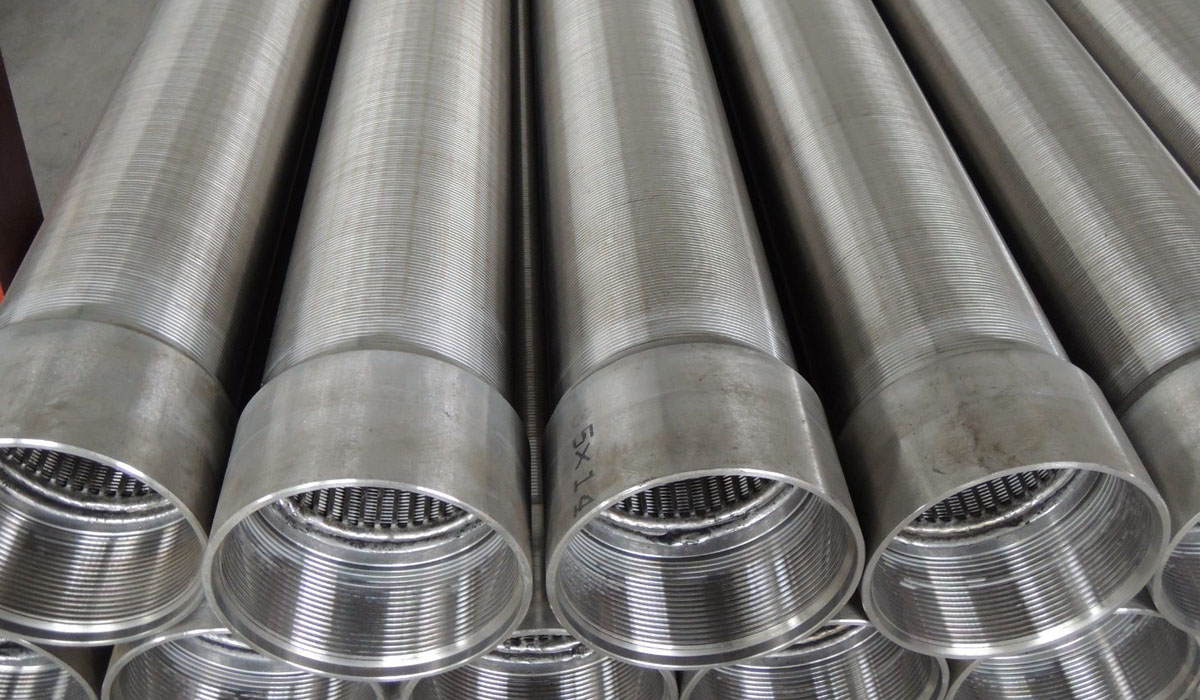
The water well screen is an important component of a well that allows water to flow into the well while preventing sediment and other debris from entering. The screen is typically located at the bottom of the well, near the aquifer. This is done to ensure that only clean water is collected and that any sediment or dirt is filtered out. The screen is typically made from a perforated pipe or other type of material that has small openings to allow water to pass through while blocking sediments from entering. Abter well screen is manufactured with a continuous v-shaped slot to reduce the entrance velocity of water and encrustation rates. Besides, Filson well screen has a large surface area without clogging, thus provide superior filtration performance. Well screen slot size selection is a critical step, typically based on the particle size analysis of the formation sample. With the standard slot size range from 0.005” to 0.5”, Filson well screen can control sand particles and silt from the well perfectly. Advantages of Water Well Screens 1. The V-shape section plane of water well screens creates the continuous slot, which can avoid blockage and make sure of the unimpeded water. Read more
Geothermal Pipe Based Screen | Sand Free Pipe Based Well Screen
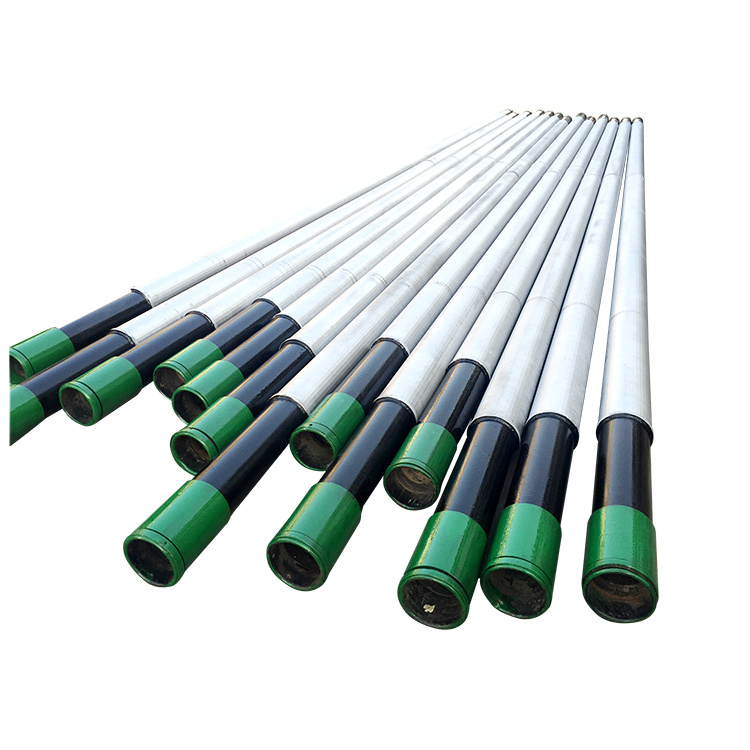
PARAMETER Geothermal Pipe based well screen specification: Nominal Diameter Pipe OD(mm) Weight lb/ftW.T[mm] Hole size In Holes per foot Total Areaofholes in2/ft Screen OD (in) 2-3/8 60 4.6[4.83] 3/8 96 10.60 2.86 2-7/8 73 6.4[5.51] 3/8 108 11.93 3.38 3-1/2 88.9 9.2[6.45] 1/2 108 21.21 4.06 4 101.6 9.5[5.74] 1/2 120 23.56 4.55 4-1/2 114.3 11.6[6.35] 1/2 144 28.27 5.08 5 127 13[6.43] 1/2 156 30.63 5.62 5-1/2 139.7 15.5[6.99] 1/2 168 32.99 6.08 6-5/8 168.3 24[8.94] 1/2 180 35.34 7.12 7 177.8 23[8.05] 5/8 136 42.16 7.58 7-5/8 194 26.4[8.33] 5/8 148 45.88 8.20 8-5/8 219 32[8.94] 5/8 168 51.08 9.24 9-5/8 244.5 36[8.94] 5/8 188 58.28 10.18 10-3/4 273 45.5[10.16] 5/8 209 64.79 11.36 13-3/8 339.7 54.5[9.65] 5/8 260 80.60 14.04 What is Geothermal Well Screen? Geothermal well screens are an essential component of a geothermal well system. They are used to filter and protect the geothermal well from debris and other contaminants that can be harmful to the system. Sand Control Screens are designed to be durable and reliable, providing long-term protection for the well. The geothermal well screen is a cylindrical tube made of a perforated metal or plastic material. The perforations are designed to allow Read more
Pre-packed well screen | Wire Wrapped Pre Packed Sand Screen
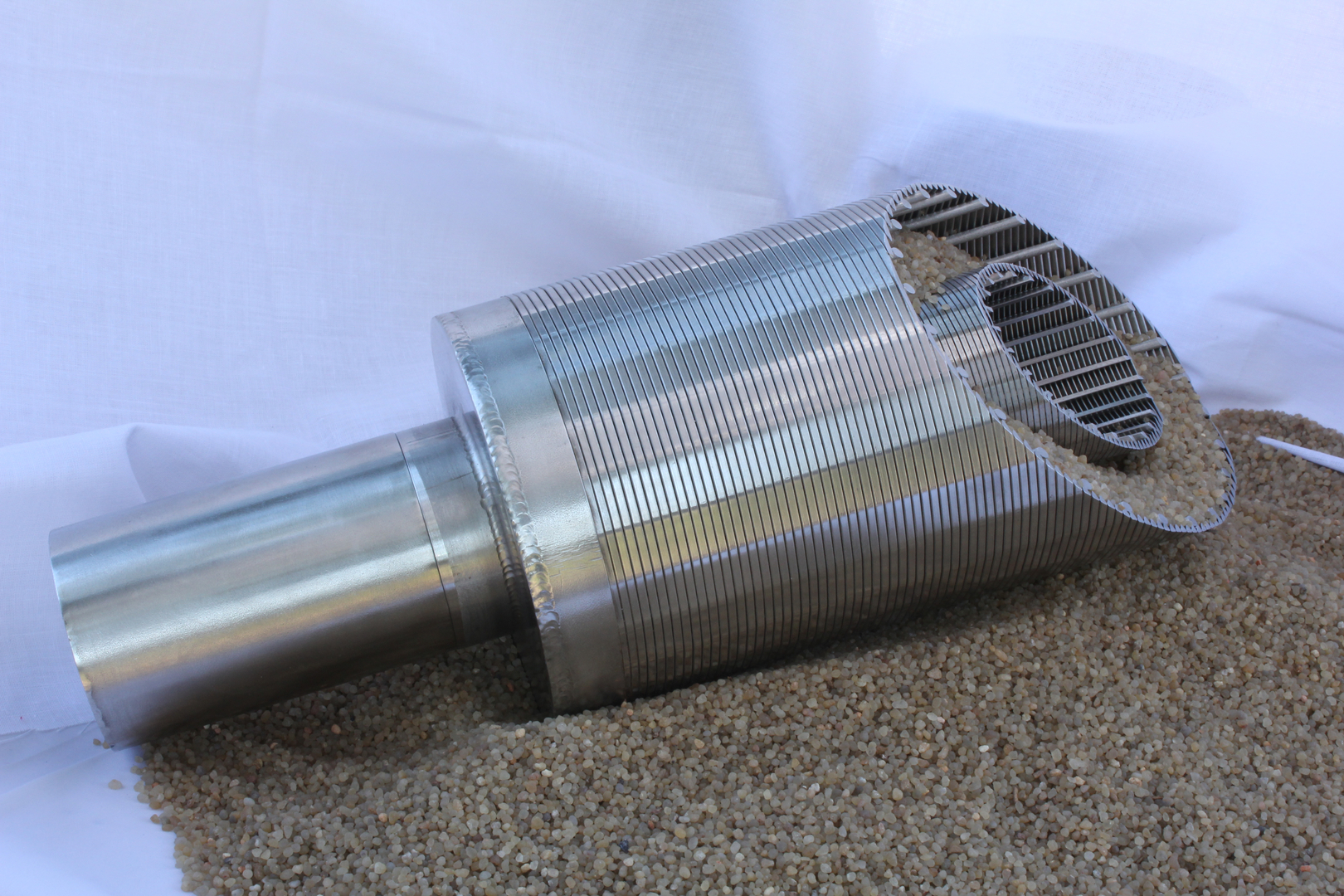
Pre Packed Sand Screen contains perforated base pipe, inner and outer screen jackets and graded sand between the jackets. It is a modification of wire wrapped screen which is used in well sorted sand or stand-alone completion. Graded sand, with or without resin coating, is considered as a filter for reservoir particles. Wire wrapped pre Pre Packed Sand Screen is used in wells where conventional gravel packing is not feasible or economical. The thickness of gravel layer can be varied to meet special requirement. What Is the Function of Gravel Pack? Gravel packing is one of popular sand-control technique used in oil, water and gas wells. It stabilizes the borehole and filters the sand from the flow, only allowing very fine particles in. Pre Packed Sand Screen wire wrapped sand screen brings it into full play in maximizing production as well as controlling the sand. Diameter: 168mm Material: stainless steel,carbon steel,etc Slot: 0.2mm End Connection: thread,coupling,etc thickness: 10mm Pre Packed Sand Screen PRODUCT SPECIFICATIONS Base Pipe Gravel Pack Perforations Screen OD (in.) ID (in.) Weight (lbs.) Coupling OD (in.) Thickness (in.) Size (in.) Holes/ft. OD (in.) Cylinder Area (sq. in./ft) 006 GA Inlet Area (sq. in./ft) 1.9 1.61 2.75 Read more
Well Screen Oil Casing , Pipe Based ,Sand Control,API 5CT
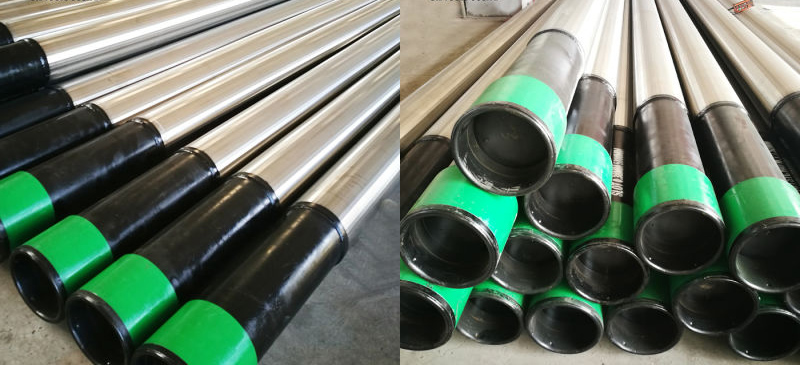
1. Grade: SUS 304 SUS304L, SUS316, SUS316L, or carbon steel 2. Slot Size: 0.02mm~15mm 3. Standard: DIN AISI ASTM 4. Certification: ISO9001, API 5CT 5.Pipe based well screens consist of base pipe,all-welded wedge wire screen and supporting rod.The base pipe is perforated or slotted API casing pipe,the base pipe can be stainless steel or carbon steel API 5CT casing.The all-welded wedge wire screens are welded together with base pipe by supporting rod. 6.Features of Pipe Based Well Screens: 1)Higher filtering accuracy: all-welded wedge wire screens as screen jacket with vee opening design makes the filtering accuracy higher,which can control sand better. 2)Excellent strength and resistance to deformation: The base pipe inside,the outside can be protected with the protection jacket added according to requirements,the integrated strength of the perforated base pipe only decreases 2~3% compared with the standard casing/oil tubing,so the pipe based well screens have enough integrated strength to resist to the pressure caused by strata.Even if some part of the well screens deformed,the slot of this part will not be widened,which makes higher sand controlreliability 3)More choices: the material of screen jacket can be stainless steel or carbon steel,the material can be chosen as per customers'requirement. 4)The smaller slot Read more
Slotted Casing Pipe | Slotted Liner Well Screen – API 5CT
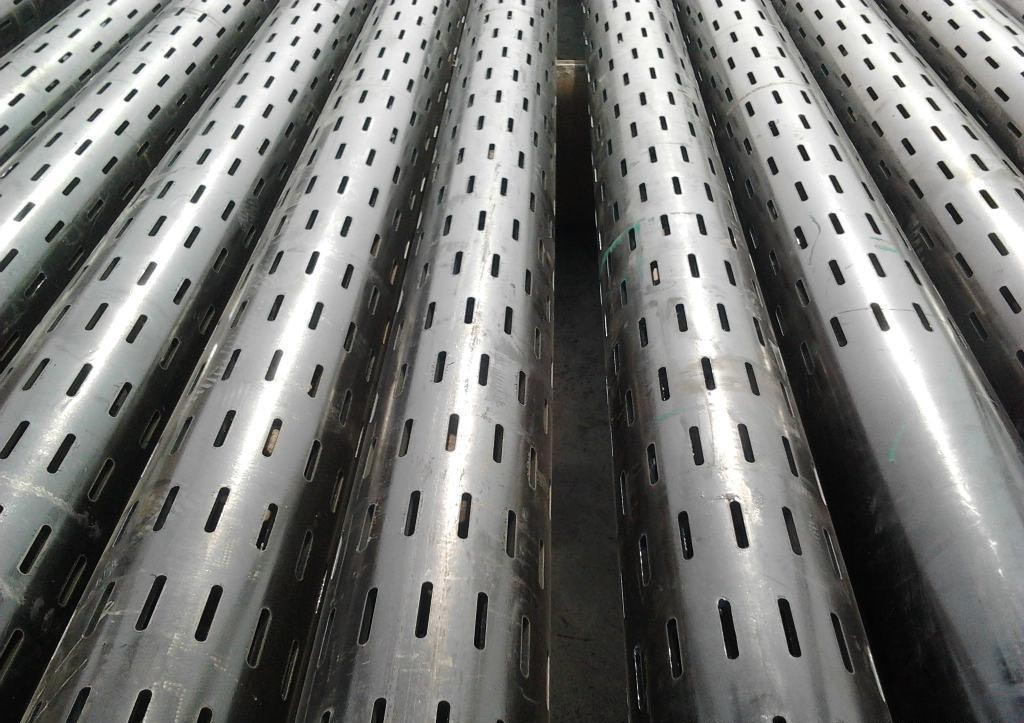
1. Introduction of Slotted Casing Pipe Casing pipe is a large-diameter pipe that serves as the structural retainer for the walls of oil and gas wells, or well bore. It is inserted into a well bore and cemented in place to protect both subsurface formations and the wellbore from collapsing and to allow drilling fluid to circulate and extraction to take place. Slotted casing pipe is a type of casing pipe that has slots machined into its surface. These slots are used to help control the flow of water, oil, and gas in a well bore. The slotted casing pipe is designed to allow water, oil, and gas to flow through the slots while preventing sand and other debris from entering the well bore. Slotted casing pipe is commonly used in oil and gas wells, water wells, and geothermal wells. 2. Types of Slotted Casing Pipe There are two main types of slotted casing pipe: open slot and perforated slot. Open slot casing pipe has slots that are cut into the surface of the pipe in a straight line. These slots are usually spaced evenly apart and are typically about 1/4 inch wide and 1/4 inch deep. Perforated slot Read more
Perforated Casing Pipe | Perforated Well Screen Piping
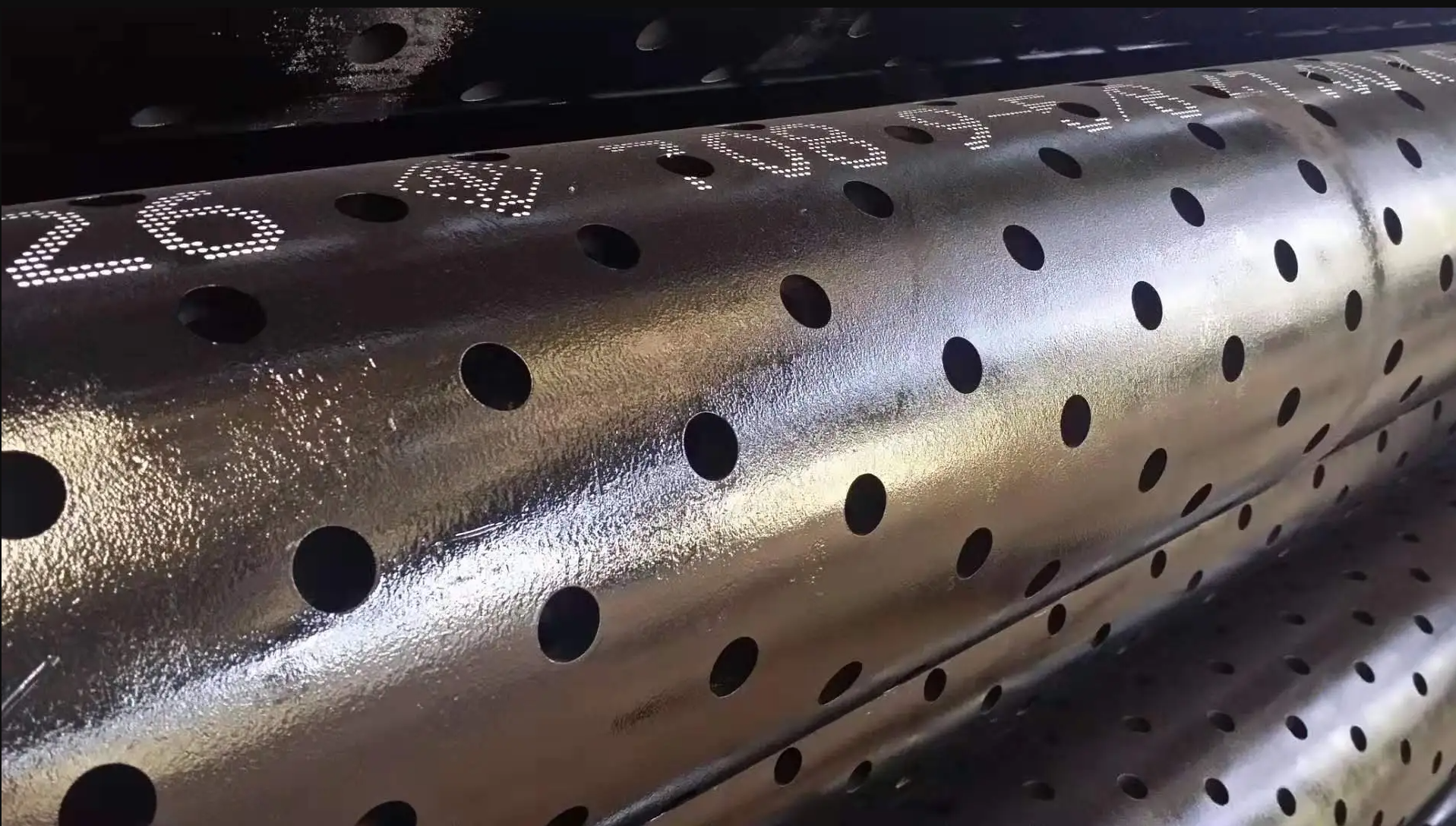
Applications of Perforated Pipe: Perforated well screen is a type of filter used in oil and gas wells. It is designed to control the flow of oil and gas from the well, while preventing sand and other debris from entering the well. perforation in the context of oil wells refers to a hole punched in the casing or liner of an oil well to connect it to the reservoir. Creating a channel between the pay zone and the wellbore to cause oil and gas to flow to the wellbore easily. In cased hole completions, the well will be drilled down past the section of the formation desired for production and will have casing or a liner run in separating the formation from the well bore. The final stage of the completion will involve running in perforating guns, a string of shaped charges, down to the desired depth and firing them to perforate the casing or liner. A typical perforating gun can carry many dozens of explosive charges. Commonly, perforation guns are run on E-line as it is traditional to use electrical signals from the surface to fire the guns. In more highly deviated wells, coiled tubingmay be used. Newer technologies Read more








